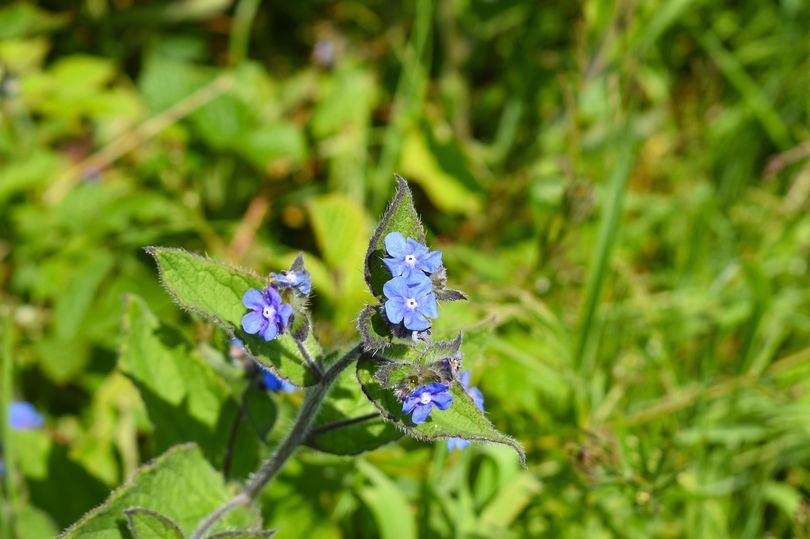
5 COMMON GARDEN PLANTS THAT ARE ACTUALLY DANGEROUS AND NEED REMOVING IMMEDIATELY
Some of your favourite and seemingly harmless garden plants could actually pose risk to your health, experts are warning.
With spring in full bloom, it's the perfect time to get back out into the garden and give it a makeover. While gardeners' love for plants knows no bounds, it's crucial to recognise and identify potentially harmful and invasive species.
Harmful plants take over gardens fast, spreading seeds extremely quickly and suffocating other plants and harming wildlife. Some can even be dangerous to pets and people and put a major dent in your house value.
Experts from London rubbish removal company, Rainbow Rubbish Removals, have identified the most invasive plant species that need immediate removal from your garden - and issued advice on how to spot them.
Giant hogweed
The giant hogweed plant is the most dangerous invasive species in the UK. It can grow taller than 10 feet and looks pretty. But despite it's appealing exterior, experts advise removing the plant as soon as you see it; it poses a significant risk to individuals unaware of its harmful effects.
Contact with the plant can induce rashes and blisters on human skin, and any contact with the sap could cause burns. There is a risk of potential blindness if the plant comes into contact with the eyes.
To control giant hogweed in your garden, London rubbish removal company suggests focusing on preventing seed formation to halt the spread. Removing the plant entirely is the most effective method. Always wear protective gear when handling the plant and cut it just below the growing point underground. If needed, apply herbicide at the start of the growing season in May.
Japanese knotweed
Japanese knotweed is a fast-spreading weed. It dies back in winter but quickly regenerates in early summer, shooting up bamboo-like stems over seven feet tall, and suppresses other plant growth in your gardens.
Unfortunately the plant impairs the growth of other garden plants and its roots can ruin pavements and house foundations. It can reduce the value of a house by up to 20 percent.
Seeking professional assistance is advisable for the removal of this invasive plant, but should you try to tackle it yourself. Rainbow Rubbish Removals suggest spraying or injecting the stems with approved herbicides. Repeated applications may be necessary, and typically, it requires a minimum of three years to effectively treat the knotweed.
Poison hemlock
Indicated by its name, this plant is highly toxic. Its poison could be deadly; it can get into the nervous system and if ingested it could be fatal to both humans and animals.
It is smooth, with purple-spotted stems and has finely divided, fern-like leaves. It typically grows up to six to 10 feet in height. Its small, white umbrella-shaped flowers appear in clusters during the summer. It is often mistaken for edible plants like parsley or wild carrots, leading to accidental poisoning
Rainbow Rubbish Removals say to always wear protective clothing when handling the plant. To remove it, dig out the whole plant, including the long taproot. Wash your hands thoroughly after bagging up the plant for removal. Continue to monitor the area for seedling growth.
Chinese wisteria
This is a climbing vine is known for its beautiful cascades of fragrant purple flowers. However, its rapid growth and ability to smother other plants make it a nuisance in gardens.
It has an aggressive growth habit, which can overtake landscapes rapidly and has an ability to strangle and kill trees and shrubs. Chinese wisteria has toxic seeds and pods, which are harmful to humans and animals if ingested.
What's more, It can cause structural damage by growing into buildings and infrastructure, de-valuing your home To remove invasive wisteria safely, cut the vines close to the root and apply glyphosate or garlon to the cut stem. Dispose of cut vines properly. Alternatively, if avoiding herbicides, trim regularly until autumn or dig up the entire plant, watching for regrowth.
Green alkanet
This plant is an invasive perennial with clusters of small blue flowers and rough, hairy leaves. Despite its attractive appearance, green alkanet can quickly spread and dominate garden beds, crowding out desirable plants.
It can smother and kill other plants in your garden, but is hard to eradicate because its seeds remain in the soil for a long tim. The hairy stems can cause skin irritation.
To remove green alkanet, pull or fork out seedlings from loose soil, ensuring you remove all roots. Keep an eye out for new seedlings near existing clumps. For established plants, dig out clumps with a border fork or spade, targeting the root system.
Smothering plants with cardboard and thick organic matter or using biodegradable mulch matting can also be effective. Keep the soil covered for several years to make sure it doesn’t spread again.
Do you have a story? Get in touch via [email protected].
2024-04-16T12:59:13Z dg43tfdfdgfd